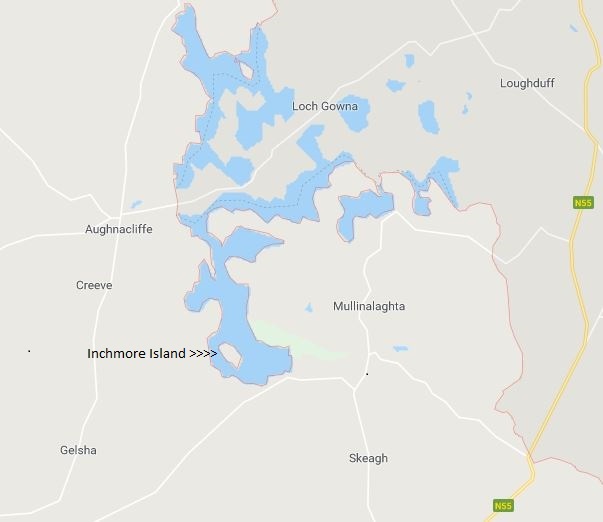Baron Longford Baron Annaly - Feudal Barons


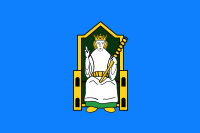
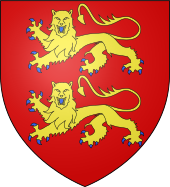
Lord Baron and Abbott of Inchmore or Inishmore Island in County Longford - Home of St. ColumbA Papal Island granted to Lord Delvin.Holy Island of Inchmore in Longford Granted to Baron Delvin, Earl of Westmeath. The rights and incorporeal rights of Inchmore were owned by Baron Delvin for hundreds of years. In a rare instance, the Pope and King of England both agreed that Inchmore Island, The Abbey, The Hereditiments, and its related territory and ruins would belong to Lord Delvin until the Schism was settled. It is also of significance that Baron Delvin was granted much of rights to the Parish of Columbkille also. The Seigneur of Fief Blondel purchased these rights to County Longford that were sold away by Baron Delvin and the Seigneur claims Inchmore and its rights to patronage, styles, titles, and hereditiments along with any legal relationship to the Vatican and Pope.Inchmore is the largest island in Lough Gowna - See Map Lough Gowna (from Irish Loch Gamhna , meaning 'calf lake') is a fresh water lake which is the uppermost lake on the River Erne . It is located on the border between County Longford and County Cavan , with the largest part of the lake being in County Longford.We will next pay a visit to the ruins of the ancient church and monastery which was founded on the island of Inchmore, in Lough Gownagh, about the same time that St. Guasacht was made Prior of St. Mary’s, Lerha. This monastery was at one time of very large proportions, consisting of the church and the main building of the abbey. The remains of the latter are very few indeed ; yet the visitor can distinctly trace in them the various apartments of the old structure. Columbkille contains some very beautiful scenery. The parish is out in twain with the splendid Lake of Gownagh, which stretches far into the County Cavan. There is certainly no part of the County Longford in which one meets with such romantic scenery as this very spot; and it is recorded that when the great St. Columb determined to undertake the conversion of the Picts and Scots in the fifth century, he retired to Inchmore, in Lough Gowna, where he spent a long time in prayer and fasting preparatory to his journey. Here, too, he raised a monastery for Canons Regular before his departure for Iona, and appointed as its first abbot St. Boodan, who died in 496, or, as some writers say, 476 A.D. In 748 the abbot, Dicolla M‘Menidi, passed to his reward, being followed, in the year 800, by M‘Laisre, who, for his sanctity and piety, was called the Excellent. In 804 the dreaded Danes appeared and plundered the abbey, which they burned to the ground, and for a period of fully fifty years after their visit the place was deserted. The monastery was, however, restored in 860 by Toictuch, who became its abbot, and died in 895, according to the Annals of the Four Masters; and we do not hear of it again until April 27th, 1414, when the abbot, Edmund M‘Findbar, died, and was interred in the cemetery attached to the abbey, as were most of his predecessors. Bishop O’Farrell, from whom the Abbey of Lerha had previously been taken, was compelled also to surrender this monastery in 1543. Its remains are yet quite extensive, and are worthy of a visit from any person who desires to visit the haunts of sanctity in the early days of Catholicity in Ireland. Inchmore Priory, Lough Gowna
St Mary (from Augustinian refoundation, after
1140) early monastic site, founded 6th century by St Colmcille occupied by Lyosagh O'Ferral by 1548, by assignment with Sir Thomas
Cusacke;
Frank
Columb - 2002 -
Snippet view
For
instance, in 1620, King James 1st granted 'To Mary, Lady Delvin, widow, and Sir
Richard Nugent, Lord Delvin, her son...the site and etc. of the late monastery of Inchemore,
otherwise Inismore, in the Annalle
---------------- Pat. 7, Dorso. LXXXIII. 17.-—“ Grant from the King to Mary Lady Delvin, widow, and Sir Richard Nugent, Lord Delvin, her son.—Longford County. The site, &c., of the late monastery of Inchemore, otherwise Inismore, in the Annalie ; a cemetery, containing II an acre in the island of Inismore; 6 cottages and 6a. of pasture in the said island; 5 messuages, 80a. of arable, 130a. mountain pasture, 20a. wood, and 24a. bog, in Castle Richard, the demesne of said monastery; 5 cottages, 90a. arable, 60a. mountain pasture, and 12a. underwood, in Ballintoll ; rent, £6 14s. 8d., Ir. * * * in Cargaghclyevan, Cavan County, 3 pottles, lately in the occupation of Ferrall Oge McFerrall McPrior and Tirlagh Mantagh McFerrall, of Garrimore, attainted. * * * The castle, bawne, town and lands of Liserdawle, otherwise Lisserdowle, with 8 cartrons of land surrounding the same ; rent, £l.”
A demesne or domain was all the land retained and managed by a lord of the manor under the feudal system for his own use, occupation, or support. This distinguished it from land sub-enfeoffed by him to others as sub-tenants
Lough Gowna - The lake contains one large island in the south-western part, Inchmore (Inis Mór in Irish, meaning "Big island"), which was the site of a monastery founded in the sixth century by Saint Colmcille. The monastery was raided by the Vikings in 804, being burned and looted. During the twelfth century, the abbey conformed to Augustinian rules and remained there until the dissolution of the monasteries by Henry VIII in 1543. The site was still used as a graveyard by the local population until the early years of the twentieth century. The remains of the abbey are still to be seen on the island. A fifteenth-century tower bell, reputedly from the monastery, was recovered in the nineteenth century and now hangs in the Roman Catholic church in the nearby village of Aughnacliffe.
The lake contains one large island in the south-western part, Inchmore ( Inis Mór in Irish, meaning "Big island"), which was the site of a monastery founded in the sixth century by Saint Colmcille . The monastery was raided by the Vikings in 804, being burned and looted. During the twelfth century, the abbey conformed to Augustinian rules and remained there until the dissolution of the monasteries by Henry VIII in 1543. The site was still used as a graveyard by the local population until the early years of the twentieth century. The remains of the abbey are still to be seen on the island. A fifteenth-century tower bell, reputedly from the monastery, was recovered in the nineteenth century and now hangs in the Roman Catholic church in the nearby village of Aughnacliffe . Despite the twenty year grant the island obviously remained with the Nugent (Earl of Westmeath) family for considerably longer. A further grant recorded in the Calendar of Papal Documents state that in 1635 the Pope permitted the Earl of Westmeath to retain the property during the schism which has not ended nearly 400 years later. Thus, the papal rights legally remain with the Longford County Grants from that era. The Papal grant was made on condition that if the schism should come to an end that the earl would restore the abbeys to whatever orders had previously held them. The Nugent estates were very considerable and quite apart from Inchmore they also held the lands of Fore which had a very large monastic site. Pope’s Grant of Inchmore to Westmeath
1635 Papal Grant of Inchmore to Delvin/Nugents of Longford Inchmore Priory, Lough GownaEarly monastic site, founded 6th century by St Colmcille Lough Gowna (from Irish Loch Gamhna , meaning 'calf lake') is a fresh water lake which is the uppermost lake on the River Erne . It is located on the border between County Longford and County Cavan , with the largest part of the lake being in County Longford.
LX. 21. — " King's letter to Sir Richard Nugent, Lord Delvin, doubting lest there might be omission or misrecital in former letters patent, and that in order that he may securely and quietly enjoy his possessions, to have a new grant of the late dissolved monastery or abbey of Inchmore, alias Inishmore, in the County of Longford, and the late dissolved priory and manor of FORE or Fower, in the County of Westmeath, and all his other lands and tenements, subject to such tenures, rents, and services as they appear of record formerly to have been subject to —
1620 - King James Pat. 7, Dorso. LXXXIII. 17.—“Grant from the King to Mary Lady Delvin, widow, and Sir Richard Nugent, Lord Delvin, her son.- Longford County. The site, &c., of the late monastery of Inchemore, otherwise Inismore, in the Annalie ; a cemetery, containing į an acre in the island of Inismore; 6 cottages and 6a. of pasture in the said island; 5 messuages, 80a. of arable, 130a. mountain pasture, 20a. wood, and 24a. bog, in Castle Richard, the demesne of said monastery; 5 cottages, 90a. arable, 60a. mountain pasture, and 12a. underwood, in Ballintoll; rent, £6 14s. 8d., Ir.
Below is the Patent Roll from James I, 1620 to Lord Delvin of Annalie's Inchemore's Moniastery, Cemetary, Cottages, Messuages, Pasture, Wood, Castel Richard, and Demesne of Monastery. The castle, bawne, town and lands of Liserdawle or Lissersdowle with 8 Catrons of land surrounding.
Prior Lease of Inchmore" Lease under letters, 10th May, IX. of Eliza- beth, to Christopher Nugent, Lord of Delvin, the site of the monastery of Inchmore in Lough gawne, and the land of the same island and Inchmore for 21 years from 1581 ; rent £6 14s. 8d. Not to alien without license under the great seal, and not to levy coyn. 30th June, IX. Eliza- beth." — Fiants of Elizabeth.
Westminster, 15 July. 18th." Citation and Reference On 30 June 1567 he obtained a lease of the abbey of Inchmore in the Annaly and the abbey of Forein County Westmeath, to which was added on 7 October the lease of other lands in the same county.[1] Later Granted Forever to Mary Nugent and Lord Delvin Richard Nugent by James I Christopher Nugent - Wikipediahttps://en.wikipedia.org/wiki/Christopher_Nugent For other people named Christopher Nugent, see Christopher Nugent (disambiguation). Sir Christopher Nugent, 6th (or 14th) Baron Delvin (1544–1602) was an Anglo-Irish nobleman ... On 30 June 1567 he obtained a lease of the abbey of Inchmore in the Annaly and the abbey of Fore in County Westmeath, to which was ... Later Granted Forever to Mary Nugent and Lord Delvin Richard Nugent by James I Pope’s Grant of Inchmore to Westmeath 1635Despite the twenty year grant the island obviously remained with the family for considerably longer. A further grant recorded in the Calendar of Papal Documents relates that in 1635 the Pope permitted the Earl of Westmeath to retain the property during the schism. The Papal grant was made on condition that if the schism should come to an end that the earl would restore the abbeys to whatever orders had previously held them. The Nugent estates were very considerable and quite apart from Inchmore they also held the lands of Fore which had a very large monastic site. Grant of Inchmore Pope
Lough
Gowna
(from Irish
Loch Gamhna
, meaning 'calf lake') is a fresh water lake which is the uppermost lake on the River Erne
. It is located on the border between County Longford
and County Cavan
, with the largest part of the lake being in County Longford.
Below is from: Ask About Ireland - http://www.askaboutireland.ie/reading-room/environment-geography/physical-landscape/lakelands-of-westmeath/lough-ree/islands-of-lough-ree/inchmore/
Inchmore
As its name suggests Inchmore is the largest of all the islands on Lough Ree. It has historically part of the administrative county of Longford. The island consists of 132 acres and 32 perches and at the time of Griffith's Valuation in 1854 it was held by the Marquis of Westmeath though we know that he did have other people resident on the island. Ring-fortOn high ground at the south end of the island is a ring-fort indicating that this island knew human habitation from early times. Throughout Ireland ring-forts survived, largely due to superstition, they were often called fairy-forts and it was considered unwise to interfere unduly with them; therefore farmers worked around them rather than risk the wrath of the spirit world. In reality these ring-forts were protected enclosures for human habitation. During the early Christian period such an enclosure would have contained shelters both for man and beast. The farmers who lived here were strong farmers, possibly the family who founded or supported the local church. The original house, like the fort itself, was circular in shape with one or two living chambers. Nothing will survive except perhaps the post holes. The most likely building material would have been hazel which would have grown locally in abundance. Early MonasticismThe monastic ruins on Inchmore consist of one featureless church on the north side of the island. The foundation is attributed to a fifth century monk, St. Lioban (or Liberius), the son of Lossenus. Canons RegularSome time before 1170 Inchmore had apparently become a priory of the Canons Regular of St. Augustine. The Augustinian canons became by far the most widespread religious order in 12th C. Ireland. The priory of Canons Regular of St. Augustine on Inchmore was probably dependent on the larger monastic settlement of All Saints at Saints Island, Co Longford. From Church to StateIn 1567 Sir Henry Sidney, Queen Elizabeth's deputy in Ireland, and the man responsible for building the first stone bridge across the Shannon at Athlone, recommended to her majesty that the Baron of Delvin, a member of the Nugent family of Westmeath, be granted Inchmore on Lough Ree. Elizabeth acceded to Sidney's request and the lands of Inchmore were granted to the Baron of Delvin for a period of twenty years. Despite the twenty year grant the island obviously remained with the family for considerably longer. A further grant recorded in the Calendar of Papal Documents relates that in 1635 the Pope permitted the Earl of Westmeath to retain the property during the schism. The Papal grant was made on condition that if the schism should come to an end that the earl would restore the abbeys to whatever orders had previously held them. The Nugent estates were very considerable and quite apart from Inchmore they also held the lands of Fore which had a very large monastic site.
Mullinalaghta formed part of the medieval
territory of Annaly, largely corresponding to today's County Longford. It was under the control of the Mac
Gearadháin (Gaynor) family, being referred to in sixteenth century documents as Muntergerran (Muintir
Gearadháin). https://www.longford.ie/en/live/towns-villages/longford/
Mel Columcille Gerard Gibson Gibson's His second name, Colmcille, is also shared by an Irish saint, and is the name of the Aughnacliffe parish in County Longford where Gibson's mother was born and raised. Because of his mother, Gibson retains dual Irish and American citizenship. Gibson is also an Australian permanent resident.
CHRISTOPHER NUGENT, eldest son of Richard
lord Delvin, by Elizabeth, eldest daughter of Jenico, viscount Gormanston, and widow of Thomas Nangle, styled
baron of Navan, was born in 1544. On the death of his father, which occurred 10 Dec. 1559, he succeeded to the
barony. During his minority he was in ward to Thomas Radcliffe earl of Sussex. He occurs as a member of Clare hall in the list of that society presented to the queen on her visit to Cambridge in August 1564. In 1565 he was knighted, and on 22 November in that year the queen sent letters to sir Henry Sidney, lord deputy of Ireland, setting forth that lord Delvin being come to his full age, personally repaired to Ireland to possess the barony descended to him from his ancestors, wherefore her majesty thought good not only to licence him to return but specially to recommend him to the lord deputy that he should have a lease in reversion for twenty-one years of the abbey of All Saints at £20 irish rent, and the custody or captainship of Sleaught-William in the Analy, which his father held during his life and his uncle had had during his minority. It appears that in or about August 1566 Shane O'Neal encamped in Betaghes country, and there encountered lord Delvin and the gentlemen of Westmeath.
In the same year he articled with her majesty to extirpate the O'Mores, sons of Ferrasse Mac Rosse, and their followers. He was to serve in person in all places within the english pale and elsewhere, and to have the leading of 150 kerne, 10 horsemen, and 50 boys of his own choice. In April 1576 he entertained the lord deputy Sidney on his progress, but in February 1578-9 we find him at the head of those who refused to acknowledge the right claimed by the government to impose without authority of parliament or a grand council, cesses or contributions for the victualling of garrisons and the lord deputy's household. He refused to sign the proclamation against the earl of
Desmond 2 Nov. 1579, and was thereupon reprimanded. He was present at sir John Perrott's parliament 26 April
1585, and afterwards going to England the queen on his return to Ireland, by letters to sir John Perrott lord
deputy, dated 13th December the same year, directed that he should have a lease of the isle of All Saints in
the county of Longford for thirty years after the expiration of his then term therein. We find lord Delvin's
arrest mentioned in a letter of 4 Jan. 1585-6. We suspect an error in the date. On 7 May 1597 the queen by a privy seal ordered him a grant in fee farm of so many manors and forfeited lands in the counties of Cavan and Longford at his election as should amount to the crown rent of £100 a-year english. In November 1599 he had a warrant from the earl of Ormond,
then commanding the queen's forces in Ireland, to treat and parley with the earl of Tyrone, and instructed
Thomas Leicester his lieutenant, and Matthew Archbould his servant to treat with him accordingly. He married Mary, daughter of Gerald, eleventh earl of
Kildare. She survived till 1 Oct. 1610. By her he had issue: Richard, created earl of Westmeath; Christopher of
Corbets-town, who died 3 July 1626; Gerald; Thomas of Dunfert in the county of Kildare, who died October 1634;
Gilbert; William; Mabel, wife successively of Murrough, third baron of Inchinquin, and of John Fitzpatrick of
Upper Ossory; Elizabeth, wife of Gerald, fourteenth earl of Kildare; Mary, the first wife of Anthony O'Dempsey,
heir-apparent to Terence, first viscount Clanmalier, she died 1618; Eleanor, wife of Christopher Chevers, esq.,
of Macetown, she died 31 Aug. 1636; Margaret, wife of Fitzgerald, esq.; and
If the monastery on Inchmore, Innismore, or Inchmory, also known as Great Island, was directly recognized by the Vatican when Baron Delvin acquired the island, it suggests a significant level of recognition and potentially unique status. Here are some possible titles and honors associated with such a monastery: 1. Abbey Nullius: This title indicates that the monastery has a special status of independence directly under the jurisdiction of the Vatican, typically headed by an abbot who reports directly to the Pope. Monasteries with this status are sometimes referred to as "territorial abbeys" and have unique privileges and responsibilities. 2. Papal Recognition: The monastery may have received formal recognition from the Pope, signifying its importance within the Catholic Church. This recognition could include papal privileges, such as exemption from certain ecclesiastical jurisdictions or additional authority granted to the abbot. 3. Royal Patronage: Given the involvement of Baron Delvin in acquiring the island, the monastery may also have enjoyed royal patronage from the aristocracy or ruling monarchy. This patronage could come with additional honors, such as royal charters, land grants, or financial support. 4. Canonical Erection: The monastery may have been canonically erected or established by a formal decree from the Vatican, confirming its status as a religious institution under the authority of the Catholic Church. 5. Historical Landmark: The monastery's recognition by the Vatican and its association with Baron Delvin could contribute to its status as a historical landmark or heritage site, signifying its importance in religious, cultural, and historical contexts. 6. Cultural Contributions: If the monastery has made significant cultural contributions, such as through art, music, or scholarship, it may receive additional honors recognizing its cultural heritage and intellectual influence. 7. Educational Institution: If the monastery includes educational facilities or has a history of scholarly pursuits, it may be recognized as an important center of learning, with associated honors for its contributions to education and intellectual discourse. 8. Spiritual Center: As a monastery recognized by the Vatican, Inchmore, Innismore, or Inchmory may serve as a significant spiritual center for Catholics, attracting pilgrims and visitors seeking spiritual guidance and solace. 9. Special Ecclesiastical Privileges: The monastery may have been granted special ecclesiastical privileges, such as the ability to administer sacraments, hold special religious ceremonies, or participate in specific liturgical traditions. These titles and honors reflect the potential significance and unique status of the monastery on Inchmore, Innismore, or Inchmory, particularly considering its direct recognition by the Vatican and its association with Baron Delvin. Top of Form
|
Lords Paramount Ireland About Longford Market & Fair Chief Captain Kings Forces Lord of the Pale Commissioners of the Peace Tenures Abolition Act 1662 - Rights to Sit in Parliament Law of Ireland Chief and Captainship of The Annaly List of Townlands of Longford Annaly The Seigneur English Pale Chief of the Annaly Lord of St. Brigit's Longford Abbey Est. 1578 Kings of Hy Niall Colmanians Seneschal of Meath Court Barons News Irish Kingdoms Lordships of Granard Fishing & Dams Rights Rights of Lords & Barons Datuk Seri Baliwick of Ennerdale Moneylagen Feudal Barons Styles and Dignities Lord Baron Longford Baron de Delvyn Longford Map Lord Baron of Delvin Baron of Temple-Michael Baron of Annaly Kingdom Annaly Lord Conmaicne Baron Annaly Order of Saint Patrick Baron Lerha Granard Baron AbbeyLara Baronies of Longford Princes of Conmhaícne Angaile or Muintir Angaile Baron Lisnanagh or Lissaghanedan Baron Moyashel Moiety of Ardagh Baron Rathline Abbeys of Longford Grants to Delvin Baron Inchcleraun HOLY ISLAND Quaker Island Longoford CO Abbey of All Saints Hereditaments Kingdom of Uí Maine Baron Dungannon Baron Monilagan - Babington Lord Liserdawle Castle Baron Columbkille Kingdom of Breifne or Breny Baron Kilthorne Baron Granarde Count of Killasonna Baron Skryne Baron Cairbre-Gabhra AbbeyShrule Fiefs of the Islands Feudal Westmeath The Island Lords Fief Worship Channel Island History Fief Blondel Fief Blondel Merchandise Events Blondel and King Richard Fief Coin Feudal Guernsey Titles The Feudal System Flag & Arms Castle Site Map Disclaimer Blondel Myth Dictionary Honorable Colonel Mentz Order of St. Columba
Feudal Baron of Longford Annaly - Baron Longford Delvin Lord Baron &
Freiherr of Longford Annaly Feudal Barony Principality Count Kingdom of Meath - Feudal Lord of the Fief
Blondel of the Nordic Channel Islands Guernsey Est. 1179 George Mentz
Bio -
George Mentz Noble Title -
George Mentz Ambassador - Order of the Genet
Knighthood Feudalherr - Fief Blondel von der Nordischen
Insel Guernsey Est. 1179 * New York Gazette ®
- Magazine of Wall Street - George
Mentz - George
Mentz - Aspen Commission - Ennerdale - Stoborough - ESG
Commission - Ethnic Lives Matter
- Chartered Financial Manager -
George Mentz
Economist -
George Mentz Ambassador -
George Mentz - George Mentz Celebrity -
George Mentz Speaker - George Mentz Audio Books - George Mentz Courses - George Mentz Celebrity Speaker Wealth
Management -
Counselor George Mentz Esq. - Seigneur Feif Blondel - Lord Baron
Longford Annaly Westmeath
www.BaronLongford.com * www.FiefBlondel.com |
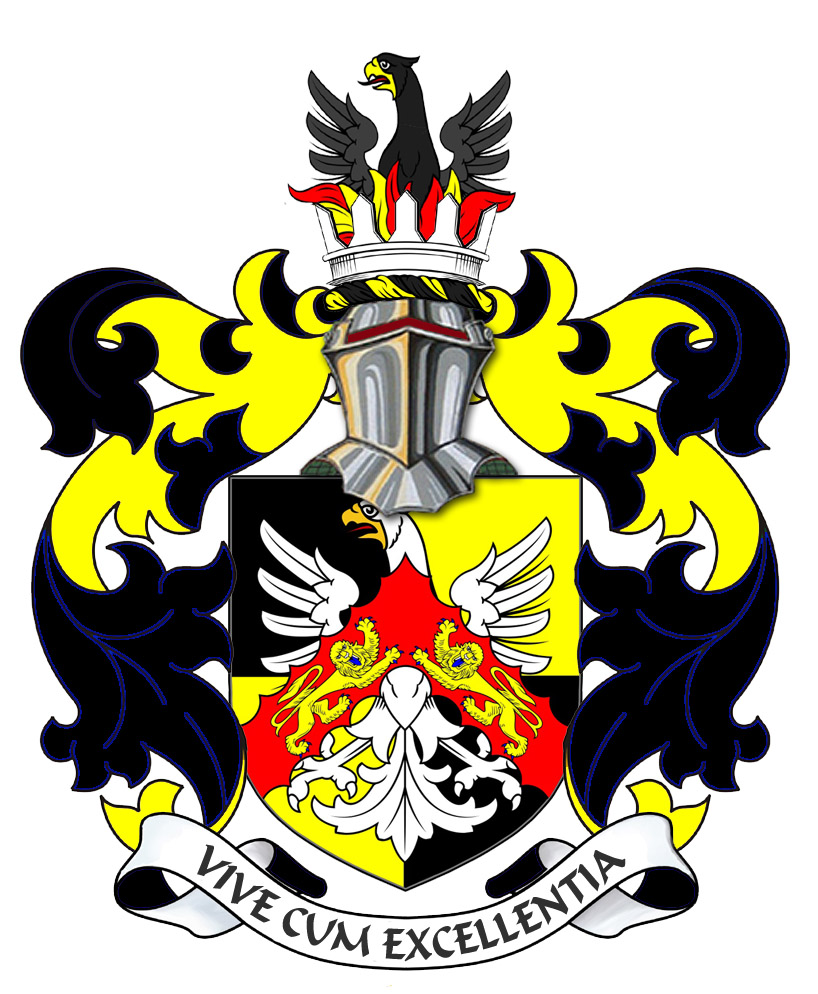

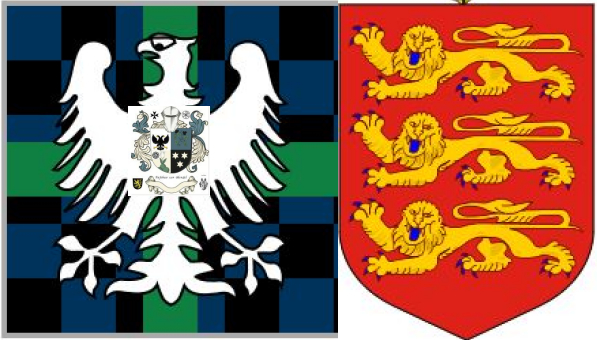

Commissioner George Mentz - George
Mentz Law Professor - George
Mentz Economist
George Mentz News -
George Mentz Illuminati Historian -
George Mentz Net Worth
The Globe and Mail George Mentz
Get Certifications in Finance and Banking to Have Career Growth | AP News

